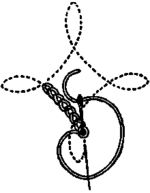[ ความเห็นส่วนตัวซึ่งมีสอดคล้องกับผู้รู้ท่านอื่นๆ
และขัดกับผู้รู้อีกหลายท่าน ] ในเรื่องของการแยกย่อยยุค "VINTAGE,RETRO AND ANTIQUE" ในการทำงานส่วนกระดาษตามแนวทางของเรา
ดังนี้ ANTIQUE (100yrs+) / VINTAGE (1920-70) สำหรับ RETRO นั้นอยู่ในช่วงที่ถอยหลังจากปัจจุบันลงไปประมาณ 15-20 ปีหน่อยๆ ซึ่งอาจมีคาบเกี่ยวไปในช่วง VINTAGE ก็ได้ แต่ยังสามารถแยกได้ด้วยการแสดงออกในเรื่องของสี อารมณ์และการใช้งาน
วินเทจ ( Vintage) จากความหมายเดิม
เป็นภาษาในวงการผลิตไวน์ หมายถึง การเก็บบ่มไวน์ระยะเวลาหลายปี เพื่อให้ไวน์นั้นได้มีรสชาติที่ดี ซึ่งจะต้องกำกับปี ค.ศ.
ที่ผลิตไว้ด้วย
ใน Oxford Dictionary ให้ความหมาย Vintage ไว้ 2 ความหมายด้วยกัน ตรงนี้ขอเขียนในความหมายที่ไม่เกี่ยวกับไวน์คือ "ระยะเวลาที่ของมีค่าบางสิ่งได้ถูกผลิตขึ้น"
ส่วน Merriam-Webster Dictionary ให้ความหมายไว้ใกล้เคียงกับ Oxford Dict. แต่มีการอธิบายเพิ่มขึ้นว่า "ความยาวนานในการคงอยู่ หรืออายุ"
ใน Oxford Dictionary ให้ความหมาย Vintage ไว้ 2 ความหมายด้วยกัน ตรงนี้ขอเขียนในความหมายที่ไม่เกี่ยวกับไวน์คือ "ระยะเวลาที่ของมีค่าบางสิ่งได้ถูกผลิตขึ้น"
ส่วน Merriam-Webster Dictionary ให้ความหมายไว้ใกล้เคียงกับ Oxford Dict. แต่มีการอธิบายเพิ่มขึ้นว่า "ความยาวนานในการคงอยู่ หรืออายุ"
ส่วน Retrorenovation นั้นได้อธิบายเพิ่มขึ้นไว้อีกว่า Vintage style นั้นจะต้องกำกับปี ค.ศ. ที่ผลิตไว้ด้วยเช่นเดียวกันกับไวน์ (เนื่องจากศัพท์คำนี้ยืมมาจากศัพท์ที่ใช้ระบุปีที่ผลิตไวน์)
ดังนั้นคำว่า Vintage style เป็นรูปแบบการทำงาน, ผลงาน,
การตกแต่งสถานที่หรือสิ่งของให้ความรู้สึกแบบเก่าๆ จึงได้มีคำว่า style ต่อท้าย แต่ถ้าไม่มี
คำว่า style ต่อท้ายจะให้ความหมายเป็นจำนวนปีที่ใช้ในการบ่มไวน์ของอังกฤษ
ทีนี้ลองมาเปรีบเทียบกับการแต่งกายแบบวิทเทจ (Vintage
Clothing) พบว่าจะมี การกำหนดช่วงเวลาในระหว่างปีค.ศ. 1920
-1960 และ Retro จะมีลักษณะใหม่กว่านั้น คือ 1960
ขึ้นมา (Wikipedia, 2012; online)
แต่แล้วก็ไปพบว่า Antique บางสำนักให้ความเห็นว่า
เป็นการเรียกรวมทั้ง Vintage และ Retro บางสำนักก็กล่าวว่า Antique ต้องนับจากปีค.ศ. 1920
หรือ 1900 ลงไป
Oxford Dictionary ให้ความหมายว่า "การเก็บสะสมสิ่งของดังเช่น
เฟอร์นิเจอร์ หรืองานศิลป์ที่มีราคาสูง เพราะอายุ หรือคุณภาพของสิ่งๆนั้น"
Merriam-Webster Dictionary ให้ความหมายว่า "โบราณวัตถุ หรือสิ่งของที่สร้างขึ้นในยุคบรรพกาล" และ
"ชิ้นงานศิลป์ เฟอร์นิเจอร์
หรือชองตกแต่งที่ได้รับการสร้างขึ้นเป็นเวลาไม่ต่ำกว่า 100 ปี"
ส่วน Wikipedia ก็ได้คำตอบทำนองเดียวกัน
เช่นนั้นขอสรุปเอาเลยว่า "Antique เป็นสิ่งของสะสมที่มีอายุอย่างน้อย
100 ปีที่ผ่านมา" แต่มีข้อยกเว้นนิด
เมื่อนำคำดังกล่าวมาใช้กับรถยนต์จะไม่นับที่ 100 ปีเพราะอายุของรถยนต์ส่วนมากไปไม่ถึง
100 ปี จึงนับแค่เพียง 75 ปีเท่านั้น
RETRO
Retro (เรโทร) เป็นคำที่มีรากศัพท์จากภาษาฝรั่งเศสมาจากคำว่า Retrospective แปลได้ว่า อะไรก็ตามที่ทำให้นึกถึงเรื่องเก่า สมัยวัยเด็ก หรือช่วงเวลาที่เป็นวัยรุ่น
เริ่มใช้กันครั้งแรกในสหรัฐอเมริกาเมื่อปี ค.ศ. 1974 (Merriam-Webster Dictionary, 2012; online)
ส่วน Oxford Dictionary, 2012; online ให้ความหมายว่า การชอบ หรือนิยมในสิ่งที่พ้นสมัยในปัจจุบัน ซึ่งการที่จะจัดความนิยมต่างๆ เข้าในกลุ่ม Retro นี้ได้ ความนิยมนั้นจะต้องมีอายุถอยหลังย้อนกลับไปประมาณ 15 – 20 กว่าปีที่ผ่านมา
รวมถึงการนำเอาสินค้าหรือบริการที่เคยเกิดขึ้นในอดีต ทั้งที่ได้หายไปแล้วหรือลดกระแสความนิยมลงกลับมาปรับปรุงให้เกิดเป็นกระแส ใหม่อีกครั้ง โดยใช้เอกลักษณ์ของสินค้าเดิมเป็นจุดเด่น
Retro ที่เป็นรูปธรรม เช่น ตลาดน้ำอัมพวา ตลาดร้อยปีคลองสวน ตลาดร้อยปีสามชุก คอนเสิร์ตย้อนยุคอย่าง แกรนด์เอ็กซ์ ชาตรี อินโนเซนต์ สินค้าก็มี เช่น ไอติมโบราณ น้ำจรวด กล้องโลโม
(ใช้ฟิล์ม)
แล้วก็ยังอุตส่าห์ไปเจอคำว่า Nostalgia ในนิตยสารแบรนด์เอจ เป็นศัพท์ทางการตลาด มีความหมายคล้ายๆ Retro แต่จะเน้นไปที่ความรู้สึก และ ประสบการณ์ แปลเป็นไทยว่า "ประสบการณ์ย้อนรำลึก" (เราชอบนะคำนี้ เห็นภาพดี ลองแปลเป็นภาษาแบบเราๆ คืออดีตที่เรียกคืนได้)
"ขอสรุปเอาเองรวมๆ แบบหลวมๆ " ว่า Vintage นั้นเป็นสิ่งของที่ผลิตในยุคอดีต ณ ช่วงเวลาใดเวลาหนึ่ง ในขณะที่ Retro เป็นคำที่หมายรวมถึงวัตถุสิ่งของ และ อารมณ์ความรู้สึก สามารถนำลักษณะของสิ่งของที่มีในอดีตหยิบขึ้นมาผลิตซ้ำ หรือดัดแปลงให้ทันสมัยขึ้นก็ได้ รวมทั้งการกลับมานิยมกันใหม่อีกครั้งเมื่อเวลาได้ผ่านไป
ในปัจจุบันความนิยมพ้นสมัยทั้ง 2 แบบ นั้น ได้รับความสนใจในกลุ่มคนจำนวนหนึ่ง ซึ่งประเภทของความนิยมในของทั้ง 2 กลุ่มนี้ พบได้ในปัจจุบันมีมากมายหลายประเภท เช่น ความนิยมศิลปะภาพโฆษณาเก่า (Vintage / Retro Advertising Art) ความนิยมดนตรีเก่า (Retro Music) เป็นต้น (Wikipedia, 2012; online)
สินค้าในกลุ่มที่กล่าวมานี้ ปัจจุบันอาจมีราคาสูงกว่าในอดีตถึงหลายเท่าตัว สำหรับคนนอกกลุ่มนักสะสม หรือผู้ไม่นิยมศิลปะยุคดังกล่าว สินค้าเหล่านี้แทบจะไม่มีค่าราคาใด แต่เพราะเหตุใดสิ่งเหล่านี้จึงมี
คุณค่า? เหตุใดจึงมีราคาสูง
?
นั่นอาจเป็นเพราะว่านักสะสมและผู้เสพศิลปะได้มองสิ่งเหล่านี้ ได้ใช้สิ่งเหล่านี้ เพื่อระลึกถึงช่วงเวลาที่มีความ สุขในความทรงจำเมื่อวันวาน และระลึกถึงความยิ่งใหญ่ในอดีตของสิ่งต่าง ๆ ที่ไม่มีสิ่งอื่นใดในปัจจุบันจะมาทดแทนได้
กลับไป "ชวนอ่าน" คลิ๊ก
นั่นอาจเป็นเพราะว่านักสะสมและผู้เสพศิลปะได้มองสิ่งเหล่านี้ ได้ใช้สิ่งเหล่านี้ เพื่อระลึกถึงช่วงเวลาที่มีความ สุขในความทรงจำเมื่อวันวาน และระลึกถึงความยิ่งใหญ่ในอดีตของสิ่งต่าง ๆ ที่ไม่มีสิ่งอื่นใดในปัจจุบันจะมาทดแทนได้
กลับไป "ชวนอ่าน" คลิ๊ก










